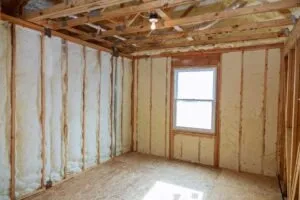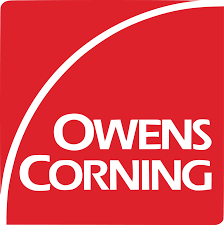A Comprehensive Guide

What are Zoning Codes?
Zoning Districts in Connecticut
Permissible Land Uses
Setbacks and Building Height

Parking and Lot Coverage
Special permits and variances
Engaging with local authorities
To ensure compliance with zoning codes, it is advisable to engage with the local authorities responsible for zoning enforcement. Contact the appropriate municipal planning or zoning department to discuss your construction plans, seek guidance, and obtain any necessary permits or approvals. Consulting professionals, such as architects or land use attorneys, can also be beneficial in navigating the zoning process effectively.
Understanding zoning codes in Connecticut is vital before undertaking any construction project. By familiarizing yourself with the zoning regulations, identifying the specific requirements for your property, and engaging with local authorities, you can ensure that your building plans align with the zoning codes, avoid potential legal issues, and contribute to the orderly development of your community. Always consult with professionals and experts to navigate the complexities of zoning codes and make informed decisions when building in Connecticut.

Advantages of Integrating Zoning and Construction Plans
Integrating zoning and construction plans offers several advantages for construction projects. Here are some key benefits:
Compliance with Zoning Regulations
By integrating zoning regulations into construction plans, you can ensure that your project complies with local zoning requirements. It allows you to incorporate setback distances, building height limits, parking requirements, and other zoning parameters directly into the design and planning process. This helps prevent costly and time-consuming modifications or rejections due to zoning non-compliance.
Early Identification of Zoning Constraints
Integrating zoning information into construction plans helps identify potential zoning constraints early in the design phase. You can assess whether your proposed project aligns with the permitted land uses, density requirements, and other zoning restrictions. This proactive approach allows you to address any issues or seek necessary variances or special permits before advancing too far into the planning process.
Streamlined Permitting and Approvals
When zoning regulations are integrated into the construction plans, the documentation required for permitting and approvals is comprehensive and accurate. This streamlines the process of obtaining necessary permits from local authorities, as the plans already incorporate zoning compliance. It reduces back-and-forth communication with zoning officials and expedites the approval process.
Enhanced Project Efficiency
The integration of zoning and construction plans promotes overall project efficiency. It eliminates the need for manual cross-referencing between separate zoning documents and construction plans, reducing the likelihood of errors or omissions. Having all the necessary information in one place streamlines decision-making reduces delays, and helps keep the project on schedule.
Cost Savings and Risk Reduction
Integrating zoning regulations into construction plans can help avoid costly design changes and construction delays caused by non-compliance with zoning requirements. By identifying and addressing zoning constraints early in the planning phase, you can minimize the risk of costly revisions and ensure a smoother construction process. It helps mitigate potential legal issues and financial penalties associated with zoning violations.
Documentation and Audit Trail
Integrating zoning and construction plans provides a centralized and easily accessible repository for all relevant documentation. It creates a comprehensive record of the project’s compliance with zoning regulations, including any variances or special permits obtained. This documentation can be valuable for audits, future reference, or any legal disputes that may arise.
By integrating zoning and construction plans, construction projects can benefit from improved compliance, streamlined approvals, enhanced collaboration, cost savings, reduced risk, and comprehensive documentation. It ensures that the project aligns with local zoning requirements from the outset, setting a solid foundation for successful and efficient construction.
Overview of Connecticut State Building Code
The Connecticut State Building Code is a set of regulations that governs the construction, renovation, alteration, and maintenance of buildings and structures within the state of Connecticut. The code is designed to ensure the safety, accessibility, and sustainability of buildings and to protect the health and welfare of the occupants.
Key points about the Connecticut State Building Code include:
- Adoption and Updates: The Connecticut State Building Code is periodically updated to incorporate the latest standards and best practices in the construction industry. The state’s building code is based on the International Building Code (IBC) published by the International Code Council (ICC). Connecticut has its own amendments and modifications to the IBC, which are incorporated into the state code.
- Applicability: The Connecticut State Building Code applies to the construction, alteration, renovation, and maintenance of various types of buildings, including residential, commercial, industrial, and public buildings. It covers aspects such as building design, structural systems, fire safety, electrical systems, plumbing, mechanical systems, energy conservation, and accessibility.
- Code Enforcement: The Connecticut State Building Code is enforced by local building departments or code enforcement agencies in each city or town within the state. These departments review and approve construction plans, issue permits, conduct inspections, and ensure compliance with the building code. Compliance with the code is typically required for obtaining construction permits and certificates of occupancy.
- Accessibility Standards: The Connecticut State Building Code incorporates accessibility requirements in accordance with the Americans with Disabilities Act (ADA) and the Connecticut Accessibility Code. These requirements aim to ensure that buildings and facilities are accessible to individuals with disabilities, providing equal opportunities for access and use.
- Energy Conservation: The Connecticut State Building Code includes provisions for energy conservation and efficiency. These requirements promote the use of energy-efficient materials, systems, and designs to reduce energy consumption and environmental impact. The code may address aspects such as insulation, HVAC systems, lighting, and renewable energy systems.
- Fire Safety: The Connecticut State Building Code includes provisions related to fire safety, aiming to prevent the spread of fires, protect occupants, and facilitate safe evacuation. It covers areas such as fire-resistant construction materials, means of egress, fire alarm systems, fire sprinklers, and fire suppression systems.
- Code Enforcement Process: The process for code compliance and enforcement typically involves plan reviews, inspections during construction, and the issuance of certificates of occupancy. Building officials or code enforcement officers review construction plans to ensure compliance with the code’s requirements. During construction, inspections are conducted at various stages to verify compliance with the approved plans. Finally, upon successful completion of the project, a certificate of occupancy is issued to indicate that the building meets the code requirements and is safe for occupancy.
It is important to consult the Connecticut State Building Code and the local amendments applicable to a specific jurisdiction for detailed information on the code’s requirements and procedures. Local building departments or code enforcement agencies can provide guidance and clarification on specific code provisions and assist with the permitting and compliance process.
How to Apply for a Building Permit through the Office of the State Building Inspector
It’s important to note that the specific steps and requirements may vary between different municipalities in Connecticut. It’s advisable to contact the local building department or code enforcement office directly to obtain detailed instructions and guidance for applying for a building permit within their jurisdiction.
- Identify the city or town where the construction project will take place. The Office of the State Building Inspector oversees building codes statewide, but the permitting process is managed at the local level by municipalities.
- Contact the local building department or code enforcement office to obtain a list of required documents for the permit application, such as architectural drawings, engineering plans, and site specifications.
- Obtain the building permit application form from the local building department or their website. Fill out the form accurately, providing all necessary project, property owner, and contractor information.
- Compile the required supporting documents as specified by the building department, which may include construction plans, energy calculations, surveys, and soil reports.
- Submit the completed application form and supporting documents to the local building department. Follow their instructions for in-person or online submission.
- Pay the applicable fees, which vary based on project scope, size, and location. Include the required payment with the application submission.
- The local building department will review the application and supporting documents for compliance with building codes and regulations. They may consult with other departments to ensure all aspects are addressed.
- Once the application is approved, the building department will issue the building permit, allowing construction to proceed. Inspections will be conducted throughout the construction process to ensure compliance with approved plans and codes. Schedule the necessary inspections as required by the building department.














